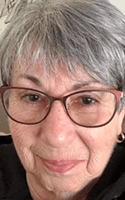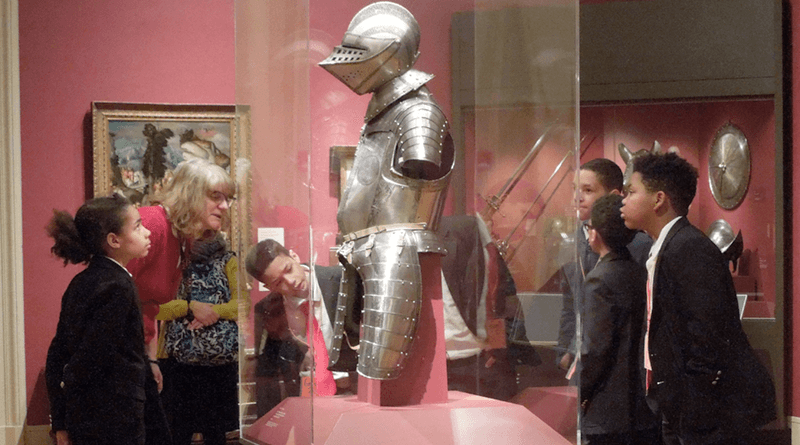Volunteers Love Working as Docents at Museums
They say they enjoy the flexible hours, the contact with the public and the learning involved in becoming a docent
By Deborah Jeanne Sergeant

After traveling for 11 years, retiree Barbara Quinn wanted to stay home and spend more time volunteering. Since she had worked as a primary grade teacher in Hamlin, working with children made sense to her.
Quinn, now 73, became a docent for Rochester Museum & Science Center. “Docent” is derived from the Latin word “docere,” which means “to teach.” That’s a main function of the role: teaching the public about a museum’s exhibits.
“It exercises my ‘teaching muscles’ working with children,” Quinn said. “They’re excited because they’re on a field trip. We have fun for an hour and then they leave with their teachers. It’s like grandparenting.”
Most of her grandchildren live far away, and the one that lives nearby is 11 — not quite so small anymore.
Quinn also likes socializing with like-minded adults at the museum.
“I love the other docents,” she said. “They are not all teachers, but come from different walks of life. They’re curious, funny and interested in the world around them.”
She enjoys the flexibility of serving as a docent at the museum since — once she completed the training — she can work as often or as little as she would like. Some weeks, it’s three or five hours of leading tours; other weeks, she doesn’t come in and spends more time with her husband, Ray Marciszewski.
Quinn also volunteers for the Rochester chapter of No One Left Behind, which supports relocating interpreters from combat zones. When not volunteering, Quinn participates in a teacher book club, visits with grandchildren and gardens.
Mary Ann Monley, administrator of volunteer services and tours for Memorial Art Gallery, views docent work as “a great extension of learning.”
Docents pay the musem $125 to become involved in the program because of the cost of the materials involved; however, scholarships are available. Docent candidates attend several months of training weekly for a few hours and complete reading assignments to prepare for leading groups. Docents can also audit art classes at University of Rochester and Nazareth College for free.
Paying their own way, the museum’s docents also take group trips to other art museums, including some in Europe. They also attend meetings twice a month to stay updated on the museum’s changing exhibits.
At Sonnenberg Gardens, the docents don’t necessarily need gardening skills; however, interest and knowledge of plants and flowers can only help. The facility also includes historic structures, so knowledge of architecture and interest in history would also assist someone who wants to volunteer as a docent. Accepted docent applicants complete orientation and shadow a docent until they learn the ropes.
Kimberly Burkard, marketing and membership manager at Sonnenberg, sees the position as “a nice way to get to meet people. You interface with the public and meet people from the area and outside the area.
“We don’t require people to be an expert. Someone who wants to learn more about gardening, this could be a good place to volunteer.”
Sonnenberg Gardens doesn’t require a minimum number of volunteer hours, but does request that docents come prepared to serve at least half a day each time they volunteer.
Docents also serve at The National Susan B. Anthony Museum & House in Rochester. Sara Meinhold, director of volunteer services, welcomes mature adults as docents.
“Volunteers who are 55-plus bring deep connections and understandings about Susan B. Anthony’s life and work,” Meinhold said. “Whether their link is through years living in the Rochester area, their occupation or an appreciation for the role reform has played in American history, our volunteers connect deeply to Susan B. Anthony’s passion and are able to share that with our curious guests.”
Volunteers attend orientation and receive hands-on training in their chosen position. Docents-to-be shadow those with experience as part of their training to become a certified tour guide. The museum asks volunteers to give six hours minimum per month, usually in two, three-hour shifts. Within three hours, a docent can complete two tours.
“Due to the rise in interest around women’s rights and the suffrage centennial, we have a number of prearranged group tours as well as school programs, so there are myriad possibilities for filling one’s commitment,” Meinhold said.
“Our docents draw inspiration from the stories they share, the time they spend with guests from around the world, and opportunities to deepen their understanding of history and current events,” Meinhold said. “Through reading and attendance at regular volunteer meetings, our docents connect with new perspectives on history while investigating their own biases, resulting in a deeper understanding of our shared history and their role in it.”

